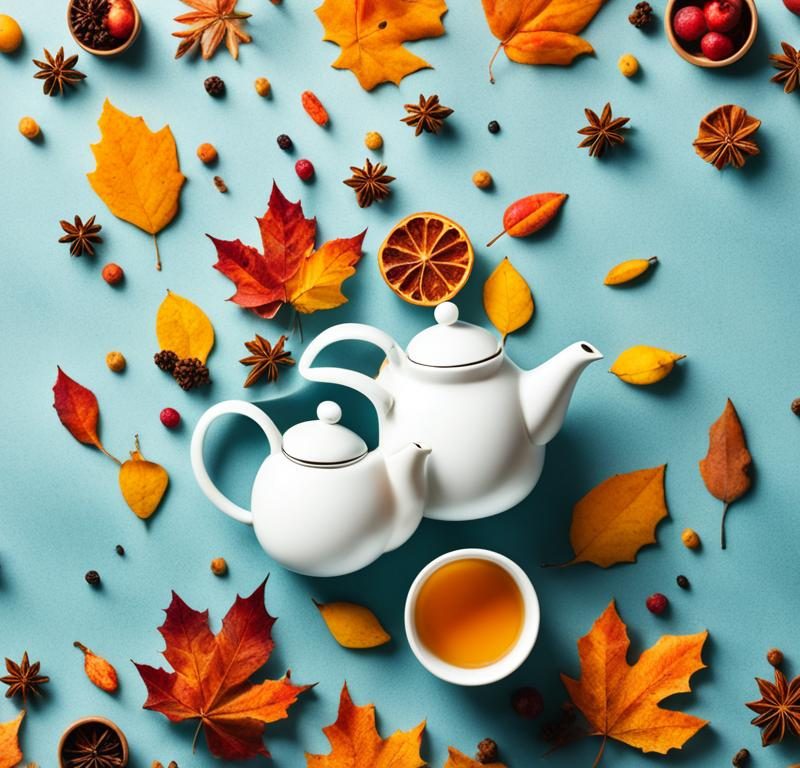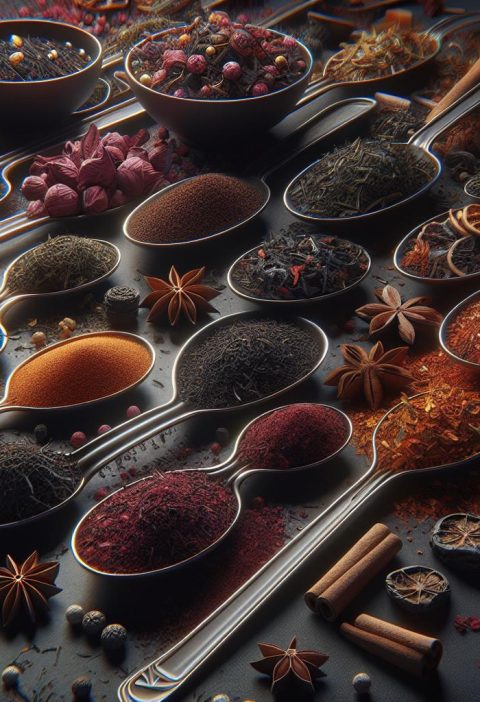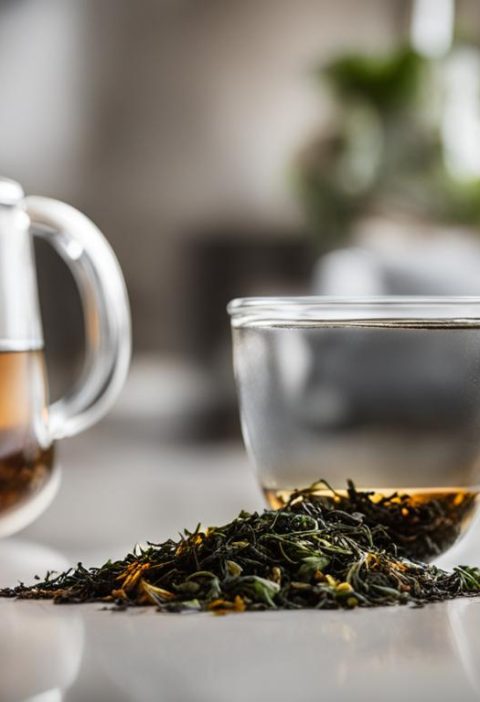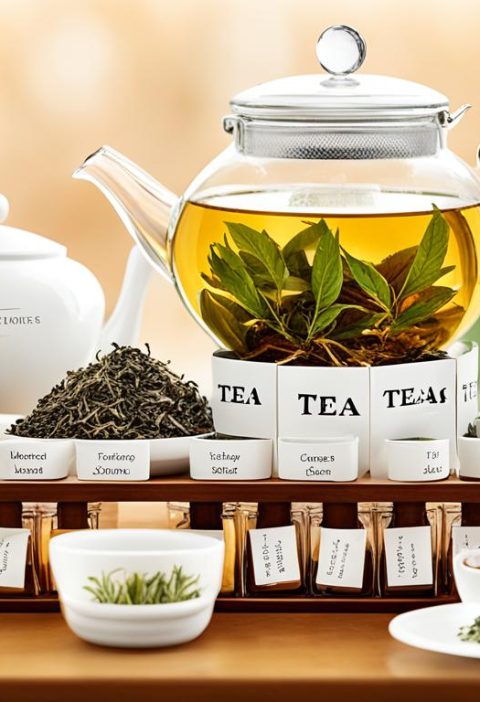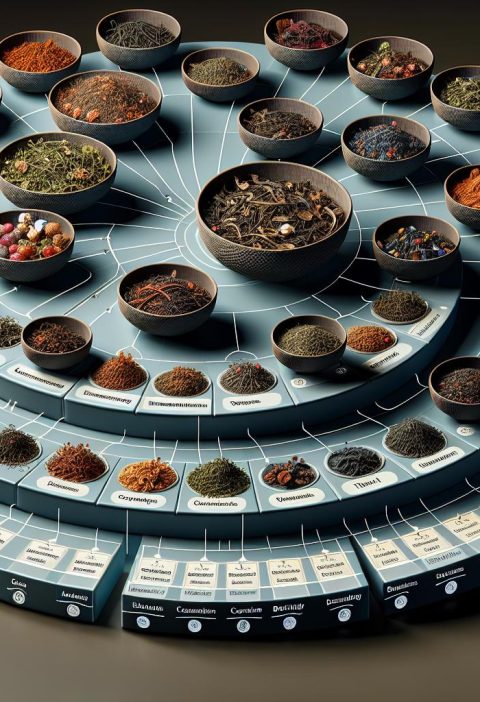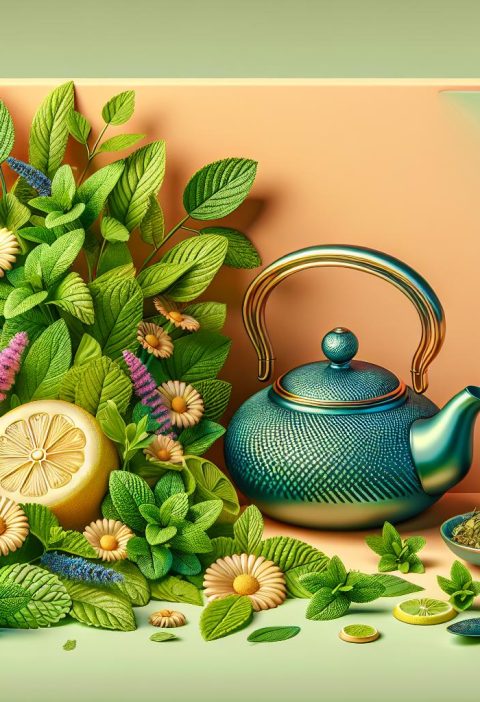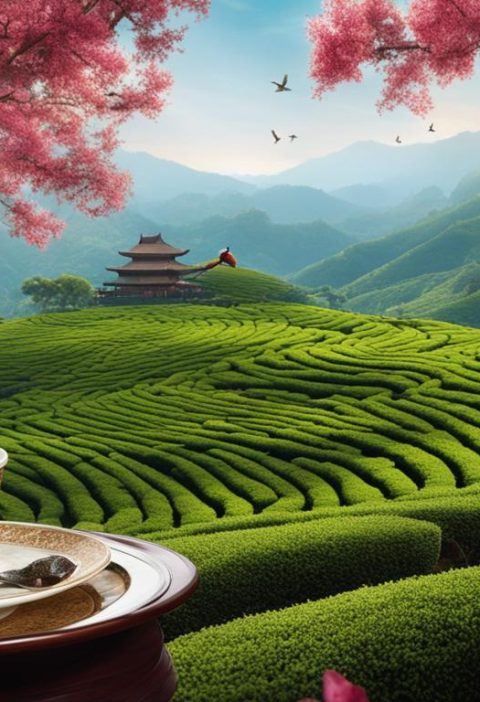When it comes to brewing the perfect cup of tea, understanding the seasonal variations and their impact on flavor is crucial. The time of year in which a tea is harvested can significantly influence its taste profile. From the naturally sweet flavors of spring teas to the brash flavors of summer teas, each season offers a unique selection of teas to explore. In this article, we will provide expert recommendations on the best brewing practices, optimal steeping times, recommended tea temperatures, and tea preparation tips for each season. Whether you’re a tea enthusiast or just starting your tea journey, these seasonal tea steeping recommendations will enhance your tea tasting experience and help you find the perfect cup for your palate.
Key Takeaways:
- Each tea harvest season has distinct flavor characteristics, influenced by the weather, time of harvest, and growing conditions.
- Spring teas are known for their naturally sweet flavors, while summer teas are often used as a base for flavored blends.
- Fall and winter teas offer unique flavor profiles, with fall being a respected harvest season and winter producing the sweetest teas of the year.
- Consider your palate and flavor preferences when selecting teas and adjusting brewing parameters.
- Experiment with different steeping times, water temperatures, teaware, and water sources to explore the full range of flavors in your tea.
Spring (March – May)
Spring is an important harvest season for teas. During this time, you can expect to find a variety of teas with enticing flavors and aromas.
Green and white teas are renowned for their sweet taste and are best picked early in the spring. These teas are known for capturing the essence of the season and offer a refreshing and delicate experience. The first buds, plucked after the winter dormancy, provide the most desirable qualities in terms of flavor and aroma.
It’s important to note that spring teas are often produced in small quantities, making them prized and sometimes more expensive. This limited availability adds to their allure, as tea enthusiasts eagerly anticipate the arrival of these early harvests.
In addition to green and white teas, spring is also the season for harvesting aromatic oolong teas, especially in Taiwan. These carefully cultivated teas are known for their complex flavors and captivating aromas. A dry weather period before the harvest is considered ideal for achieving the best flavor in these aromatic oolong teas.
Discover the captivating flavors of spring teas, with their subtle sweetness and fragrant notes. The limited quantities and optimal harvesting weather conditions contribute to the special qualities found in teas picked during this season.
| Tea Type | Flavor Profile |
|---|---|
| Green Tea | Refreshing, grassy, sweet |
| White Tea | Delicate, floral, subtle sweetness |
| Aromatic Oolong Tea | Complex, floral, fruity |
Summer (June – August)
In the summer months of June to August, tea plants experience a period of increased growth, resulting in a bountiful summer tea harvest. This season sees the production of mass-produced teas that cater to the high demand for this popular beverage.
However, the rapid growth rate and warmer weather conditions during summer contribute to teas with less developed flavor profiles and higher caffeine content. While some tea enthusiasts may prefer the robustness of these teas, others might find them lacking in complexity when compared to teas harvested during other seasons.
Black teas harvested in summer often find their way into tea bags or blends due to their bold and brash flavors. These teas are known for their rich and robust taste, making them suitable for those who enjoy a strong cup of tea. On the other hand, green teas harvested in summer are often used as a base for flavored blends, allowing for the infusion of various fruit or floral flavors.
While summer teas may not offer the same subtle nuances and flavor intricacies as teas from other harvest seasons, they serve a purpose in providing a strong foundation for blended teas or drinks that require added flavors.
Explore the vibrant flavors of summer teas and discover a range of options that cater to different preferences. Whether you crave the boldness of black tea or the refreshing notes of flavored green tea, there is a summer tea waiting to be savored.
Comparison of Summer Tea Characteristics
| Tea Type | Flavor Profile | Caffeine Content | Common Uses |
|---|---|---|---|
| Black Tea | Bold, robust, brash | High | Tea bags, blends |
| Green Tea | Base for flavored blends | Medium | Flavored teas, iced teas |
Fall (September – November)
In the world of tea, the fall season brings a highly respected harvest that offers unique flavors and characteristics. Fall tea harvests are considered significant in many tea-growing regions, particularly for oolong teas. In regions like Guangdong, Fujian, and Taiwan, oolong teas have a secondary harvest in the fall, adding a new dimension to these beloved teas.
The qualitative differences between spring and fall harvests can vary from year to year and depend on personal preference. While spring harvests are known for their aromatic and floral profiles, autumn/winter teas have a richer and creamier texture, providing a delightful sensory experience. These autumn/winter teas are often referred to as “Winter” teas, particularly in the case of Taiwanese oolongs picked in October or November.
By exploring teas from the fall harvest, tea enthusiasts can savor the unique flavors that these seasonal teas offer. Whether you prefer the aromatic and floral spring harvests or the richer and creamier autumn/winter texture, the fall tea harvest provides an excellent opportunity to indulge in the diverse world of tea.
Winter (December – February)
During the winter months, tea plants enter a dormant period in most regions of China. This is a time when the plants collect carbohydrates in their roots, storing energy to fuel new growth in the coming spring. The dormant period plays a significant role in flavor development, as the stored carbohydrates contribute to the flavor profile of the tea leaves that will be harvested in the following season.
However, in Taiwan, an interesting phenomenon occurs during the winter. Unseasonably warm weather can sometimes trigger the tea plants to bud, resulting in a unique season called ‘dong pian’ or ‘winter sprout’. This winter harvest is known for producing some of the sweetest teas of the year, as the warmer temperatures encourage the plants to develop a high concentration of natural sugars.
This winter tea harvest in Taiwan contrasts with the traditional harvest seasons, offering a distinct flavor profile and a unique opportunity for tea connoisseurs to indulge in the sweetest teas of the year.
Image:
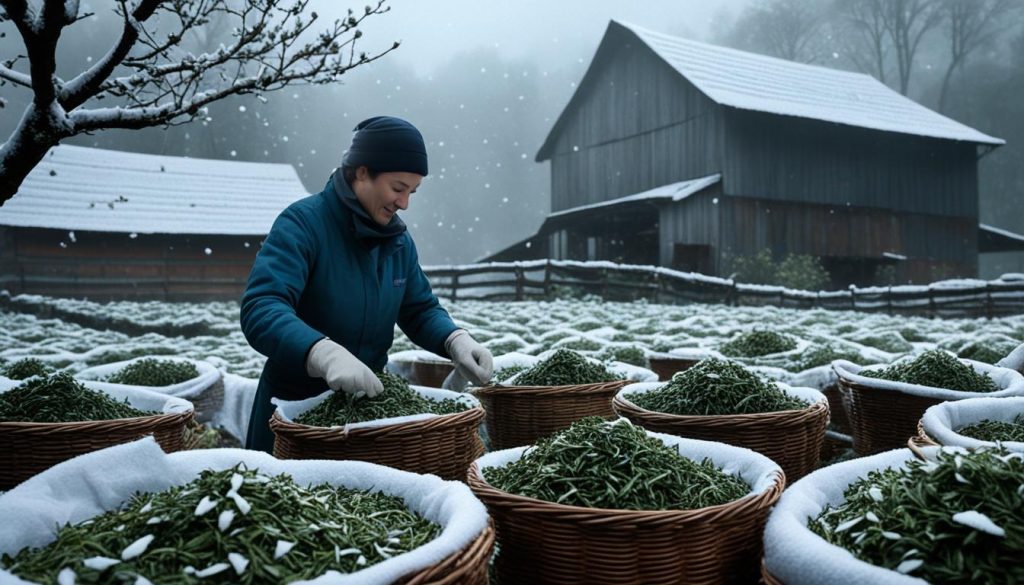
Consider Your Palate
Your palate plays a significant role in how you experience the flavor of a tea. Factors such as your flavor preferences, changing taste buds, and even external influences can affect how you perceive the taste and aroma of different teas.
If you recently consumed strongly flavored food, it can temporarily impact your palate and potentially alter the way you appreciate the subtleties of a specific tea. Similarly, if you have a cold or are experiencing cold symptoms like a stuffy nose, your ability to discern flavors and aromas may be diminished.
When evaluating the taste of a tea, it’s important to consider the condition of your palate and any external factors that might influence your experience. By doing so, you can better understand the nuances of different teas and enhance your overall enjoyment.
Take a moment to reflect on your flavor preferences, the state of your taste buds, and any recent experiences with strongly flavored food or cold symptoms. This self-awareness will help you evaluate teas more accurately and choose the ones that align with your personal preferences.
Effect of Strongly Flavored Food
- Recent consumption of strongly flavored food can temporarily dull your palate.
- Flavors from previous meals can linger, influencing the taste of subsequent beverages.
- Consider waiting for some time after eating before engaging in a tea tasting experience to fully appreciate the flavors.
Changing Taste Buds
- Taste buds can gradually change over time due to various factors, including age, hormonal fluctuations, and dietary changes.
- What you previously enjoyed might not be as appealing now, or you might discover new flavor preferences.
- Stay open to exploring different tea varieties to accommodate your evolving taste buds.
Impact of Cold Symptoms
- Cold symptoms, such as a stuffy nose, can affect your ability to fully appreciate the aromas in tea.
- A congested nose can hinder your ability to perceive the subtle fragrance notes in teas, diminishing your overall tasting experience.
- Consider selecting teas with strong, distinct flavors that can still be appreciated even with a compromised sense of smell.
By being mindful of your palate and its potential influence on how you perceive tea flavors, you can make more informed choices and discover teas that best suit your preferences.
Adjust Your Serving Size
When it comes to brewing tea, the amount of tea used can have a significant impact on the strength and flavor of your brew. Different tea styles have varying densities, meaning that densely packed leaves require less volume to achieve a similar concentration of flavor.
By adjusting your serving size and using more or less tea, you can tailor the brew to your desired taste preferences. If you prefer a stronger and more robust flavor, increase the amount of tea you use. Conversely, if you prefer a milder and sweeter brew, decrease the amount of tea.
Experimenting with different serving sizes allows you to fine-tune the strength of your tea to suit your personal liking. It’s all about finding that perfect balance that satisfies your taste buds.
To give you a better idea of how tea amount affects the brew, here’s a comparison of serving sizes and their resulting flavor profiles:
| Serving Size | Tea Strength | Flavor Profile |
|---|---|---|
| A Small Amount of Tea | Light | Mild, Delicate |
| A Moderate Amount of Tea | Medium | Balanced, Smooth |
| A Generous Amount of Tea | Strong | Rich, Robust |
Remember:
- Adjusting tea amount can impact the strength and intensity of your brew.
- Densely packed leaves require less volume to achieve a similar flavor concentration.
- Using more tea will result in a stronger brew, while using less tea will yield a milder brew.
- Experiment with different serving sizes to find your preferred flavor profile.
So go ahead, play with the tea amount and discover the perfect balance of strength and flavor that makes each cup of tea truly yours.
Adjust Your Water Temperature
When it comes to brewing tea, water temperature is not to be underestimated. It has a significant impact on the flavor of your brew, so getting it right is essential. Different tea types require different water temperatures to unlock their full potential.
Delicate teas like green and white teas are best brewed at lower water temperatures. Using boiling water can result in a bitter or overly astringent taste. To bring out the delicate flavors and aromas of these teas, try using water that is heated to around 160-175°F (71-79°C). This lower temperature allows for a gentle brewing process, preserving the nuanced flavors of the leaves.
On the other end of the spectrum, dark teas like black and pu-erh teas benefit from hotter water temperatures. Boiling water (212°F or 100°C) is recommended to extract the robust and full-bodied flavors that define these teas.
Of course, these are general recommendations, and each tea may have its own preferred temperature range. Don’t be afraid to experiment and find what works best for your taste buds. Adjusting the water temperature can unlock new dimensions of flavor in your favorite teas.
Temperature Recommendations for Different Tea Types
- Green and White Teas: 160-175°F (71-79°C)
- Oolong Teas: 180-200°F (82-93°C)
- Black Teas: Boiling water (212°F or 100°C)
- Pu-erh Teas: Boiling water (212°F or 100°C)
Experiment with different water temperatures and observe how it affects the taste of your tea. You may be surprised by the subtle nuances that emerge as you fine-tune your brewing method. Remember, the journey to the perfect cup of tea is all about finding what pleases your palate.
Adjust Your Steeping Time
When brewing tea, the steeping time plays a crucial role in achieving the desired flavor profile. It can compensate for variations in water temperature and prevent bitterness or a vegetal taste from overpowering the brew. By adjusting the steeping time, you can enhance the overall taste experience and extract the full flavors of the tea leaves.
Shorter infusions are particularly useful when working with delicate teas or teas that tend to become bitter quickly. They help prevent over-extraction, allowing you to enjoy a milder and more balanced cup of tea. Steeping for a shorter time also promotes a quicker separation of leaves from the liquor, preventing the infusion from becoming overly strong or overwhelming in taste.
On the other hand, longer infusions are beneficial for extracting the full flavors from certain types of teas, such as black teas or aged teas. The extended steeping time allows for a deeper extraction of the tea leaves’ complex compounds, resulting in a richer and more robust flavor profile. Longer infusions can also enhance the aromatic qualities of the tea, providing a more immersive sensory experience.
It’s important to note that the ideal steeping time varies depending on the type of tea and personal preference. To find the perfect balance, it’s recommended to follow the general guidelines for steeping times provided by tea experts. However, feel free to experiment and adjust the steeping time according to your taste preferences.
By adjusting your steeping time, you can unlock the full potential of your tea leaves and create a customized brew that suits your palate. Whether you prefer a milder and more delicate cup of tea or a bold and robust infusion, controlling the steeping time allows you to tailor the brewing process to your desired flavor intensity.
Next, let’s explore the influence of teaware on flavor and how choosing the right materials can enhance your tea-drinking experience.
Try Different Teaware
When it comes to brewing tea, the choice of teaware can have a significant impact on the flavor of the brewed tea. Certain materials, like plastic and metal, can absorb flavors and impart them to delicate brews. That’s why it’s important to choose teaware that enhances the flavors of your favorite teas. In this section, we’ll explore different types of teaware and their suitability for different teas.
Preferred Teaware Materials
When selecting teaware, it’s important to consider the materials used in their construction. Glazed ceramic and glass are highly recommended as flavor-neutral options. These materials do not interact with the tea and allow the flavors to shine through without any interference. They are perfect for brewing a wide variety of teas, from delicate green and white teas to robust black teas.
If you prefer a more traditional and authentic experience, unglazed teapots, such as those made from Yixing clay, can be a great choice. These teapots are known for their porous nature, which allows them to absorb and retain the flavors of the tea. Over time, these teapots develop a seasoning that adds complexity and depth to the brewed tea. However, it’s important to note that unglazed teapots are better suited for certain teas, like oolongs and pu-erhs, as they can retain the flavors and aromas of the previously brewed tea.
Teaware Influence on Flavor
The influence of teaware on flavor extends beyond just the material. The size, shape, and design of teaware can also affect the brewing process and the resulting taste. For example, smaller teapots are often preferred for brewing highly aromatic teas, as they allow for better extraction of the tea’s flavors and aromas. On the other hand, larger teapots may be ideal for teas that require a longer brewing time or for serving multiple people.
When it comes to teacups, the thickness of the material can also influence the flavor. Thicker cups tend to retain heat for longer periods, keeping the tea warm and allowing the flavors to develop more fully. Thinner cups, on the other hand, may provide a more immediate sensory experience, as the tea cools down more quickly.
Teaware Materials and Suitability for Different Teas
| Teaware Material | Suitability for Different Teas |
|---|---|
| Glazed Ceramic and Glass | Recommended for brewing a wide variety of teas |
| Unglazed Teapots (e.g., Yixing clay) | Suitable for certain teas, like oolongs and pu-erhs |
Take the time to explore different types of teaware and experiment with brewing your favorite teas using different materials. You may be surprised to discover how teaware can enhance or alter the flavors of your brews. Remember, the teaware you choose is an integral part of the tea experience and can make a difference in every sip.
Try a Different Water Source
Water quality plays a significant role in the flavor of your tea. The composition of the water can affect how the tea extracts and impacts its overall taste. If you’re experiencing an undesirable flavor, it may be worth trying a different water source to see if it improves the taste.
One common issue is hard water, which contains high levels of minerals like calcium and magnesium. These minerals can alter the taste and texture of the tea, often resulting in a harsh or metallic flavor. To improve the quality of hard water, consider using a filtering pitcher that can reduce the mineral content, providing a smoother and more enjoyable tea experience.
Additionally, experimenting with different water sources can offer unique insights into the flavor profiles of your favorite teas. Bottled water, for example, may have a different mineral composition compared to tap water, leading to distinct taste variations. Trying different water sources can be a fun and educational way to explore the nuances and complexities of tea flavors.
While it’s important to consider water quality, it’s worth noting that fully purified water may not be the best choice for brewing tea. Fully purified water lacks the minerals that contribute to the natural flavors of the tea, resulting in a flat or muddy taste. It’s best to find a balance where the water is clean and filtered but still retains essential minerals for optimum flavor extraction.
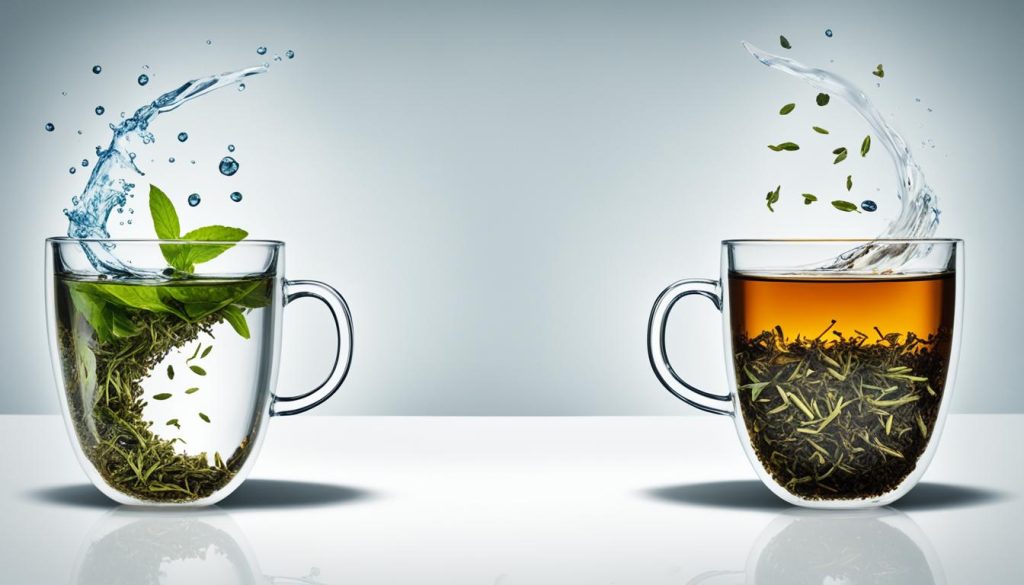
Summary:
- Water quality has a significant impact on the flavor of tea.
- Filtering pitchers can help improve the quality of hard water for a smoother taste.
- Experimenting with different water sources, such as bottled water, can provide unique flavor experiences.
- Avoid using fully purified water as it may result in a flat or muddy taste.
Try a Different Tea
When it comes to the flavor of your tea, the quality of the leaves can make a significant impact. If you find that your tea lacks complexity or has a stale taste, it may be worth considering the quality of the tea leaves themselves.
Choosing high-quality tea leaves is key to achieving the best flavor. Look for reputable tea brands that prioritize quality sourcing and production practices. Opt for teas that have been carefully harvested and processed to preserve their natural flavors.
Avoid low-quality leaves that may be mass-produced or contain fillers. These leaves often lack the distinctive qualities found in high-quality teas and can result in a lackluster brew.
Furthermore, freshness and proper storage are crucial aspects to consider. Tea leaves should be stored in airtight containers away from heat, moisture, and strong odors to maintain their flavor and prevent staleness. Be mindful of the expiration dates indicated on tea packaging, as freshness deteriorates over time.
